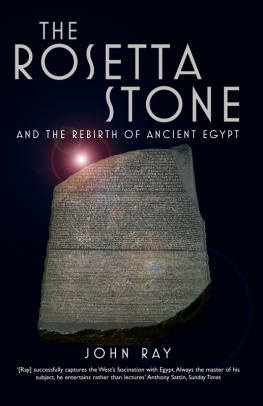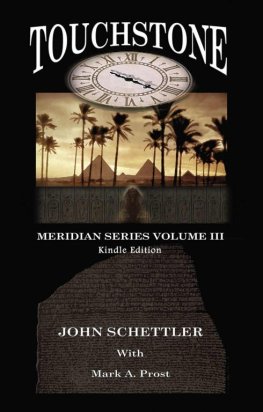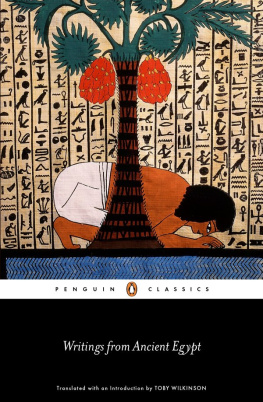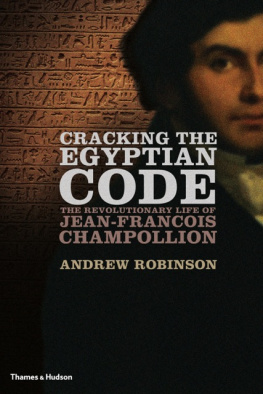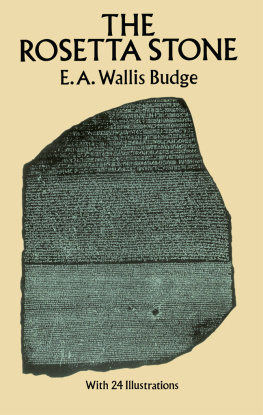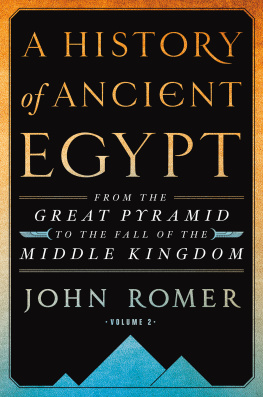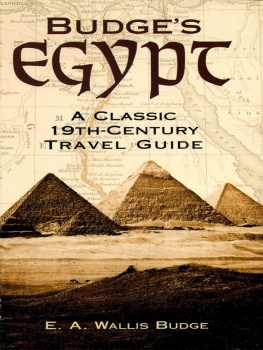Ray John - The Rosetta Stone and the rebirth of ancient Egypt
Here you can read online Ray John - The Rosetta Stone and the rebirth of ancient Egypt full text of the book (entire story) in english for free. Download pdf and epub, get meaning, cover and reviews about this ebook. City: Egypt, year: 2014, publisher: Profile Books, genre: Religion. Description of the work, (preface) as well as reviews are available. Best literature library LitArk.com created for fans of good reading and offers a wide selection of genres:
Romance novel
Science fiction
Adventure
Detective
Science
History
Home and family
Prose
Art
Politics
Computer
Non-fiction
Religion
Business
Children
Humor
Choose a favorite category and find really read worthwhile books. Enjoy immersion in the world of imagination, feel the emotions of the characters or learn something new for yourself, make an fascinating discovery.
- Book:The Rosetta Stone and the rebirth of ancient Egypt
- Author:
- Publisher:Profile Books
- Genre:
- Year:2014
- City:Egypt
- Rating:3 / 5
- Favourites:Add to favourites
- Your mark:
- 60
- 1
- 2
- 3
- 4
- 5
The Rosetta Stone and the rebirth of ancient Egypt: summary, description and annotation
We offer to read an annotation, description, summary or preface (depends on what the author of the book "The Rosetta Stone and the rebirth of ancient Egypt" wrote himself). If you haven't found the necessary information about the book — write in the comments, we will try to find it.
Ray John: author's other books
Who wrote The Rosetta Stone and the rebirth of ancient Egypt? Find out the surname, the name of the author of the book and a list of all author's works by series.
The Rosetta Stone and the rebirth of ancient Egypt — read online for free the complete book (whole text) full work
Below is the text of the book, divided by pages. System saving the place of the last page read, allows you to conveniently read the book "The Rosetta Stone and the rebirth of ancient Egypt" online for free, without having to search again every time where you left off. Put a bookmark, and you can go to the page where you finished reading at any time.
Font size:
Interval:
Bookmark:
Highly readable Ray takes us on an ancient journey from this sunset of the ancient Egyptian world BBC History
Delightfully written a model of clarity. Shines as bright as the Aten disc clear and bold Fortean Times
Rock idol with the power to bewitch it is a talisman, a communication from the ancient world THES
An articulate idiosyncratic biography of the Rosetta Stone The quirky nature of history and human achievement is highlighted throughout this book with a strong sense of irony by an excellent story-teller, in a thought-provoking manner Egyptian Archaeology
A thoroughly enjoyable introduction to this famous survival of a vanished civilisation Contemporary Review
Sheds new light on topics such as the fragile political position of the stones hero and the issue of whether the stone should one day be returned to Egypt New Scientist
JOHN RAY is Professor of Egyptology at Cambridge University and a Fellow of the British Academy. He has made regular appearances on television and is a reviewer for the Times Literary Supplement and other journals. His Reflections of Osiris: Lives from Ancient Egypt is also published by Profile.
ALSO BY JOHN RAY
Reflections of Osiris: Lives from Ancient Egypt
(Profile 2001)
WONDERS OF THE WORLD
THE ROSETTA STONE
AND THE REBIRTH OF
ANCIENT EGYPT
JOHN RAY

This paperback edition published in 2008
First published in Great Britain in 2007 by
Profile Books Ltd
3A Exmouth House
Pine Street
Exmouth Market
London EC1R 0JH
www.profilebooks.com
Copyright John Ray, 2007, 2008
The moral right of the author has been asserted.
All rights reserved. Without limiting the rights under copyright reserved above, no part of this publication may be reproduced, stored or introduced into a retrieval system, or transmitted, in any form or by any means (electronic, mechanical, photocopying, recording or otherwise), without the prior written permission of both the copyright owner and the publisher of this book.
A CIP catalogue record for this book is available from the British Library.
eISBN 978 1 84765 066 5
For Sonia
But I dont suppose well meet
(Luxor, January 1990)
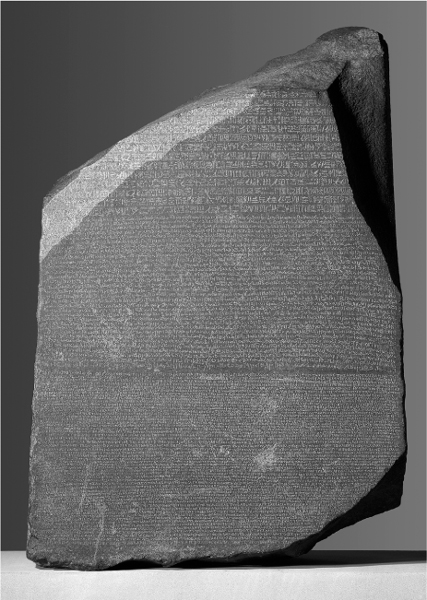
1. The Rosetta Stone as it is today, on display in the British Museum.

INTRODUCTION
The Rosetta Stone is the most famous object in the British Museum. According to the museums own figures, it is the most visited item in the entire display, and perhaps the most lingered over, although a similar claim is sometimes made for the unwrapped mummy of a ginger tomcat which also forms part of the Egyptian collections. The stone is one of the worlds wonders, although it does not feature in the conventional lists of Wonders of the World. It is not a monumental building, but it attracts pilgrims in the way that imposing ruins do. In mundane reality it was part of a mass-produced series of stelae, a technical term for slabs of stone designed to perpetuate the official records of the Egyptian state. What it records is a decree, the text of an agreement issued jointly by a king and a synod of ancient Egyptian clergy. Its purpose was to witness to the Pharaohs benevolence towards his people and his piety towards the gods. It was the sort of thing a good king was expected to do, and to go on doing.
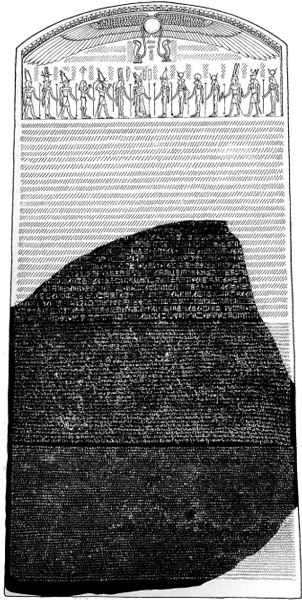
2. The Rosetta Stone as it was originally: modern reconstruction by Richard Parkinson and colleagues at the British Museum.
According to the inscription on the stone, an identical copy of the decree was to be placed in every sizeable temple in the land. Whether this really happened is impossible to say, but a few copies of the same trilingual decree have been found and can be seen in other museums. The version that we have is some 112 centimetres high and 76 centimetres wide, but the original stone was considerably taller than it is today. Its uppermost register would have been decorated with figures of the king and the gods of the temple where it stood. These are long gone. Of the hieroglyphic text which formed its second register, only a third is left. The hieroglyphs were the most important of the scripts on the stone; they were there for the gods to read, and the more learned of their priesthood. The grammar and vocabulary of this section of the decree were scarcely changed from what they would have been 2,000 years earlier. The Greek text which forms the bottom register has also lost one of its corners. Since the arrival of Alexander the Great in 332 BC, Egypt was ruled by the dynasty of the Ptolemies, who carried on the title of Pharaoh, although Greek was now the language of government. However, in the hierarchical world of Egyptian temples, this Johnny-come-lately script, a miserable alphabet with no more than twenty-four signs and no religious connotations whatsoever, had no choice but to remain on the bottom row. The inscription above the Greek register is the best preserved, but even this is not complete. It is composed in demotic, a form of hieroglyphic shorthand which was the standard script for day-to-day affairs in the Egypt of the Ptolemies, and which was closest to the spoken language of most of the population.
The Rosetta Stone lay for centuries in the ruins of its temple, perhaps in the city of Sais or somewhere else in the Nile Delta. At some point what remained of it was reused as building material, since its long-silent inscriptions could no longer be read. It may not have reached the town of Rosetta until the later part of the fifteenth century, when the fort into which it was recycled was constructed. It lay buried in this fort until the summer of 1799, when the French, who had invaded Egypt the previous year, restructured the building as part of their efforts to secure the coast. The French officers sensed that the stone was something extraordinary. Off it went to Cairo, and the attentions of Napoleons think-tank, the savants of the so-called Institut dgypte. But its existence among the French was to be short-lived, since it was destined to fall into the hands of their arch-enemy, the British.
The day may come when the stone has spent longer in the British Museum than it ever did in Rosetta. Since its arrival in the museum as spoils of war in June 1802, it has never left its adopted home, apart from being moved to shelter during the two World Wars. There was also a brief visit to Paris in 1972, to celebrate a centenary and a half of its decipherment. The press at the time made much of the possibility that the unscrupulous French were preparing to kidnap it. Nothing of the sort occurred, and it is now back in the Egyptian galleries. For a part of its history in the museum it was displayed without a glass cover, so that visitors could touch its surface. Nowadays this is not encouraged, but the museum has enter-prisingly placed a replica in the Kings Library for those who feel the need to run their hands over the inscriptions. It is as if this ancient piece of granite has become the modern version of a religious relic.
Religious relics in the Middle Ages were a centre for the tourist industry, and they spawned replicas and souvenirs. The stone is no exception. There are postcards, facsimiles, booklets and imitations everywhere on sale. Figures given by the British Museum itself confirm that, over the years, and as long as museum staff can remember, a plain postcard of the Rosetta Stone has been the best-selling item in its souvenir bookshop. As postcards go, it is devoid of action and almost monochrome, since all it shows is a piece of lead-coloured rock covered with whitish signs that must be unintelligible to most of the people who buy it. This is not the point: visitors to the museum clearly feel the need to own something of the stone, and to take it home with them or share it with their friends. It is as if the museum and the stone are interchangeable, and the stone has become the part which can stand for the whole building and its wealth of collections. More substantial than a postcard, a small rubber version of the stone is the mouse pad which is helping me write this introduction. Such things are the takeaway equivalents of the pieces of cloth which have touched a famous icon or a bone of one of the Apostles.
Next pageFont size:
Interval:
Bookmark:
Similar books «The Rosetta Stone and the rebirth of ancient Egypt»
Look at similar books to The Rosetta Stone and the rebirth of ancient Egypt. We have selected literature similar in name and meaning in the hope of providing readers with more options to find new, interesting, not yet read works.
Discussion, reviews of the book The Rosetta Stone and the rebirth of ancient Egypt and just readers' own opinions. Leave your comments, write what you think about the work, its meaning or the main characters. Specify what exactly you liked and what you didn't like, and why you think so.

